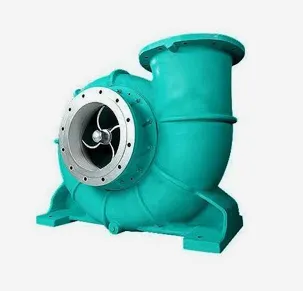Latvian
- Afrikaans
- Albanian
- Amharic
- Arabic
- Armenian
- Azerbaijani
- Basque
- Belarusian
- Bengali
- Bosnian
- Bulgarian
- Catalan
- Cebuano
- Corsican
- Croatian
- Czech
- Danish
- Dutch
- English
- Esperanto
- Estonian
- Finnish
- French
- Frisian
- Galician
- Georgian
- German
- Greek
- Gujarati
- Haitian Creole
- hausa
- hawaiian
- Hebrew
- Hindi
- Miao
- Hungarian
- Icelandic
- igbo
- Indonesian
- irish
- Italian
- Japanese
- Javanese
- Kannada
- kazakh
- Khmer
- Rwandese
- Korean
- Kurdish
- Kyrgyz
- Lao
- Latin
- Latvian
- Lithuanian
- Luxembourgish
- Macedonian
- Malgashi
- Malay
- Malayalam
- Maltese
- Maori
- Marathi
- Mongolian
- Myanmar
- Nepali
- Norwegian
- Norwegian
- Occitan
- Pashto
- Persian
- Polish
- Portuguese
- Punjabi
- Romanian
- Russian
- Samoan
- Scottish Gaelic
- Serbian
- Sesotho
- Shona
- Sindhi
- Sinhala
- Slovak
- Slovenian
- Somali
- Spanish
- Sundanese
- Swahili
- Swedish
- Tagalog
- Tajik
- Tamil
- Tatar
- Telugu
- Thai
- Turkish
- Turkmen
- Ukrainian
- Urdu
- Uighur
- Uzbek
- Vietnamese
- Welsh
- Bantu
- Yiddish
- Yoruba
- Zulu
Telephone: +86 13120555503
Email: frank@cypump.com
Aug . 01, 2024 05:47 Back to list
High-Performance OEM Slurry Pump for Efficient Handling of Waste and Industrial Applications
Understanding OEM Trash Slurry Pumps
In the industrial landscape, the efficiency and reliability of pumping systems are critical for sustaining operations, particularly in sectors that handle abrasive and viscous materials. One such solution is the OEM (Original Equipment Manufacturer) Trash Slurry Pump, specifically engineered to move difficult-to-handle slurries filled with solids. This article examines the importance, functionality, and applications of these pumps, as well as considerations for selecting the right OEM model.
What is a Trash Slurry Pump?
A trash slurry pump is a type of centrifugal pump designed to handle heterogeneous mixtures containing solid particles, such as water mixed with mud, sludge, or waste. Unlike standard pumps that may be easily damaged by solids, trash slurry pumps possess robust construction features that enable them to efficiently transport abrasive and corrosive materials. OEM trash slurry pumps are specifically manufactured to meet precise specifications set by industries, ensuring compatibility and optimal performance in diverse applications.
Key Features of OEM Trash Slurry Pumps
1. Durable Materials OEM trash slurry pumps are typically crafted from high-quality materials such as cast iron, stainless steel, or various metal alloys. This construction provides resistance to wear and tear from abrasive solids, extending the pump’s service life.
2. High Capacity These pumps are designed to handle a large volume of slurry with a significant amount of solids. Their impellers are engineered to minimize blockage while maximizing flow efficiency.
3. Customizable Options OEM manufacturers often provide customizable features, allowing end-users to tailor the pump to their specific operational needs—be it the size of solids, the viscosity of the slurry, or the required flow rate.
4. Energy Efficiency Modern designs focus on reducing energy consumption while maintaining high performance. Efficient motor options and hydraulic designs help minimize operational costs over time.
5. Rigid Construction To withstand the rigors of slurry transport, these pumps come with reinforced structures that impart them with the strength needed to handle tough working conditions.
Applications of Trash Slurry Pumps
OEM trash slurry pumps are utilized across various industries, including
oem trash slurry pump

- Mining In mineral extraction processes, these pumps are crucial for transporting slurry from ore processing, ensuring efficient movement of tailings and waste
.- Wastewater Treatment These pumps effectively manage sludge and other by-products of wastewater treatment, contributing to the safe disposal and recycling of water.
- Construction In construction sites where excavation is involved, trash slurry pumps eliminate water mixed with soil and debris, facilitating a cleaner work area.
- Papermaking and Pulp The pulp and paper industry employs these pumps for transporting slurries containing wood fibers and other materials that can be abrasive to conventional pump systems.
Selecting the Right OEM Trash Slurry Pump
Choosing the right OEM trash slurry pump is paramount for ensuring operational efficiency. Prospective buyers should consider several factors
1. Type of Slurry Analyze the characteristics of the slurry, including particle size, density, and viscosity, to determine the appropriate pump type.
2. Required Flow Rate Understanding the flow requirements is essential to select a pump with the right capacity.
3. Head Requirements Evaluate the total height the slurry must be pumped, including any elevation changes throughout the system.
4. Maintenance Select pumps designed for easy maintenance and accessibility to ensure minimal downtime.
5. Supplier Reputation Working with reputable OEMs can offer peace of mind regarding product reliability and customer support.
In conclusion, OEM trash slurry pumps play a vital role in various industries by providing reliable solutions for handling challenging materials. Understanding their features and applications, as well as making informed choices when selecting a pump, can significantly enhance operational efficiency and productivity.
-
Horizontal Split Case Pump with GPT-4 Turbo | High Efficiency
NewsAug.01,2025
-
ISG Series Pipeline Pump - Chi Yuan Pumps | High Efficiency, Durable Design
NewsAug.01,2025
-
Advanced Flue Gas Desulfurization Pump with GPT-4 Turbo | Durable & Efficient
NewsJul.31,2025
-
ISG Series Vertical Pipeline Pump - Chi Yuan Pumps | Advanced Hydraulic Design&Durable Construction
NewsJul.31,2025
-
ISG Series Vertical Pipeline Pump - Chi Yuan Pumps | Energy Efficient & Low Noise
NewsJul.31,2025
-
pipeline pump - Chi Yuan Pumps Co., LTD.|High Efficiency&Low Noise
NewsJul.31,2025










